The world of PFAS contamination, testing, and regulation has been moving forward at breakneck speed as the U.S. EPA continues to implement its PFAS Strategic Roadmap for 2021-2024. To help Pace® customers stay up to date, we’re compiling the latest news and developments we think should be on everyone’s radar.
Stay updated on the latest PFAS news.
Have Pace® News and Views delivered to your inbox.
WHO Muddies the (Drinking) Water
Ever since the U.S. EPA released dramatically lower interim health advisories for PFOA and PFOS, many people have been questioning how the agency arrived at these new levels. Just as the discussion seems to have died down a bit, the World Health Organization (WHO) has added their voice to the mix. In September, they issued a draft document entitled “PFOS and PFOA in Drinking-water,” in which they recommended guidelines of 100 ppt for PFOA and PFOS, individually or combined. The WHO also set a provisional guidance level of 500 ppt for all PFAS, with “all” being defined as the approximately 30 PFAS they considered measurable.
It's not surprising that the WHO would weigh in on an important global health issue such as PFAS in drinking water. What is surprising is that the levels they recommended are dramatically higher than the EPA’s new interim health advisories of 0.004 ppt for PFOA and 0.02 ppt for PFOS. They’re even higher than the previous EPA 2016 PFOA and PFOS health advisories of 70 ppt. Of course, the EPA is under no obligation to consider the WHO’s guidelines when issuing health advisories or when setting Maximum Contaminant Level (MCLs) for PFOA and PFOS in drinking water. Nevertheless, the WHO’s recommendations could have an impact on the PFAS discussion worldwide.
Proposed Rule to Regulate PFOS and PFOA Sent to the OMB
The U.S. EPA moved one step closer to its goal of setting MCLs for PFOA and PFOS in drinking water by the end of 2023 when it sent the proposed rule to the Office of Management and Budget (OMB) in early October. While we do not know the contents of that proposal, it will be interesting to see the results of the OMB’s analysis. Remember, the OMB already labeled the EPA’s plan to designate PFOA and PFOS hazardous substances under CERCLA “economically significant.” In an unsanctioned review, U.S. Chamber of Commerce estimated the cost of this latest rule to be $800M annually.
The EPA plans to publish its proposed rule by the end of 2022, so we may not have long to wait for the details of the agency’s plans. However, the OMB has until January 6, 2023 to respond to the agency’s proposal, so if the EPA sticks to its timetable, we may see the plan before we see the cost analysis.
Preventing PFAS Runoff at Airports Act
Aqueous film-forming foam (AFFF), the traditional firefighting foam used to fight Class B chemical fires, often contains PFAS. This foam is slowly being replaced by PFAS-free foams at airports, but the FAA has yet to approve a PFAS-free foam for use in an aviation emergency. In addition, AFFF has a long shelf life, so older foams are often used in training exercises. Senate Bill 3662, The Preventing PFAS Runoff at Airports Act, increases the federal cost share to 100%, on a temporary basis, for the acquisition and installation of input-based testing equipment that enables commercial airports to test their ARFF (aircraft, rescue, and firefighting) vehicles without discharging PFAS-containing AFFF into the environment. As of this writing, the bill has passed the U.S. House and Senate but has yet to be sent to the President for signing.
One More Thing for Farmers to Worry About
As if PFAS in biosolids were not bad enough, researchers have given farmers and the food-consuming public one more thing to worry about. As reported in the Journal of Hazardous Materials, Texas Tech and Cropping Systems Research Laboratory in Lubbock, Texas, found elevated levels of PFOS in 6 of 10 pesticide formulas tested. Levels ranged from 3.92 mg/kg (3,920,000 ppt) to 19.2 mg/kg (19,200,000 ppt). With the EPA’s ultra-low drinking water advisory for PFOS at 0.02 ppt, these values should set alarm bells ringing for rural water system operators as well as farmers.
PFAS in Rainwater
If you have been following the news, there is a good chance that you have seen a newscast or article talking about how high concentrations of PFAS have been found in rainwater in every corner of the world. Even the Tibetan Plateau had a PFOA value 14 times higher than the U.S. EPA’s new drinking water interim health advisories. Here is a link to the study report for those of you who want a bit more information than you typically get from your local newspaper. While we have not seen any evaluation of the study methods or looked in detail at the sampling methods, the data is interesting. For samples taken in 2019 in the Indiana/Ohio area, the average value for total combined concentration of PFOA and PFOS was 7000 ppt, well above the EPA’s previous 2016 health advisories for these two compounds, let alone the new advisories. That’s even higher than the WHO’s advisory of 500 ppt for total PFAS combined. Hopefully, some of the PFAS destruction and remediation solutions that are being worked on in commercial and academic labs will be proven effective soon.
Is Your Popcorn Safe?
Finally, the media can always be counted on to report on what matters to the average American, and PFAS in microwave popcorn bags has been making the rounds recently. A 2019 study reported significantly higher levels of PFAS in the bloodstreams of people who ate microwave popcorn on a regular basis: Up to 63% higher for those who ate popcorn daily. Time to break out the celery sticks next time you sit down to watch your favorite shows!



